Existentialism in an election year - The Lagrange Point Vol. I, Iss. 2.
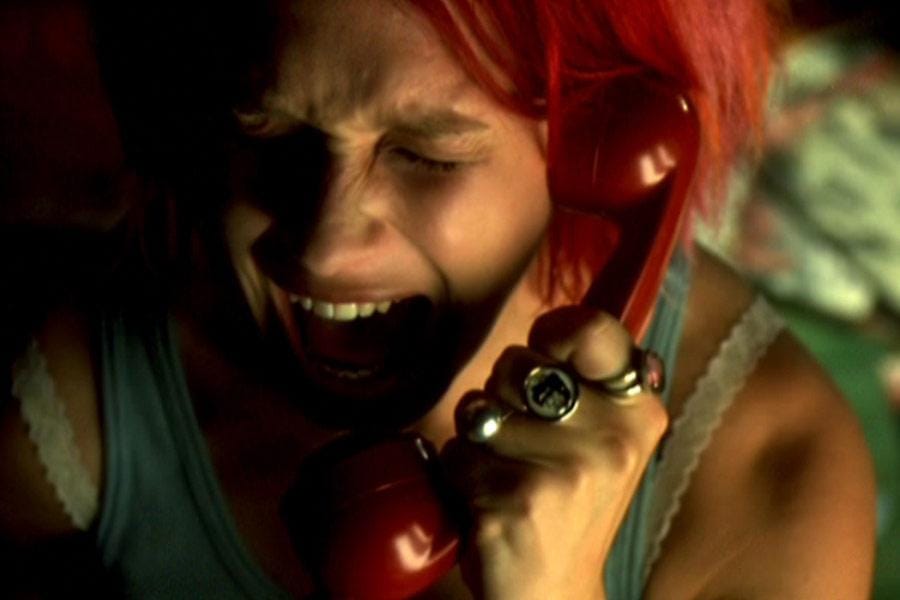
Welcome to the second issue of The Lagrange Point! If you aren't familiar with this budding e-newsletter, you can find out more in this post here.
In This Issue
Distant Early Warnings
- Geeky releases for younger audiences, including something...non-Canadian?
Crafter's Corner
- "Rivet Wars - Ruska Heroes"
Rantables
- "Crybully Country - Trump's shooting and the victim-aggressor narrative"
And Lastly, A Word
- "Cosmic Butterflies in our Stomachs - Run Lola Run"
Distant Early Warnings
Upcoming releases and events of Canadian geek things
Canadian geek stuff is for the children! Here's a couple of releases for younger audiences, as well as a sneak peek at a cool-looking video game... and something from across the pond, too.

preview image
Toronto-based game studio Alientrap (Wytchwood, Cryptark) have released screenshots for their latest game, Dune Crawler, and I have to say the art looks awesome and the game concept sounds great. You control these massive crustaceans across a desert landscape, armed with cannons and seeking treasure. They'll be demoing the game in Kyoto at BitSummit July 19 to 21, so maybe Early Access is coming soon, too.
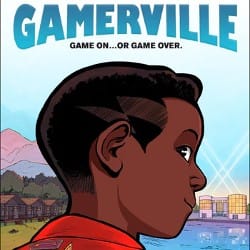
Puerto-Rican born Vancouverite Johnnie Christmas, comic creator of titles like the acclaimed Swim Team, has a new title hitting stores this week. Gamerville is a middle-school (ages 8 to 12) comic that sees a gamer sent to "Camp Reset" by his parents, where electronics are forbidden. While it might sound like a finger-wagging screed against video games, Christmas says his book celebrates video gaming while emphasizing the importance of human, face-to-face interaction.

& Reconciliation
Box Art
Continuing on with geeky stuff that's also educational, Indigenous board game creator James Darin Corbiere has finally found a publisher for The Truth in Truth and Reconciliation. Corbiere has been working on the game for years, and Medicine Wheel Publishing has stepped up to the plate to distribute it. While it's mainly marketed as an educational tool, I got a look at it during Indigenous People's Day at Royal Roads University and can say it's an engaging game for anyone interested in this kind of untold history. Pre-sales are open for August 2024 shipping!

from Wallace and Gromit
And finally, I'm going to cheat on this one as it's non-Canadian, but I had to include it because it's one of my favourite things. Announced in June, Wallace and Gromit, beloved claymation duo from Britain's Nick Park, are back this Christmas with a new feature film. Wallace & Gromit: Vengeance Most Fowl will see the return of classic villain Feathers McGraw, and will be released direct to Netflix everywhere but the UK, where it will go up on BBC.
Crafter's Corner
Games Workshop's Inquisitor (54mm) - Inquisitor Lydixia's Warband
In mid-2001, during a more innocent, optimistic age, Games Workshop attempted something bold and daring. They released Inquisitor, a tabletop miniatures game that, in contrast to their tent-pole Warhammer and Warhammer 40,000 games, focused on small groups of around three to five characters, rather than whole armies, and included some soft RPG elements.
GW had dipped into "warband" style games before, with titles like Space Hulk or Necromunda, but in addition to giving a LOT more detail into individual characters, with statistics and weaponry and such, they also upped the ante quite literally by boosting their product line from 28mm scale to 54mm scale.
This game hit me at a rather formative time in my relationship to miniature painting. I was a teenager, and poor, and as such, I had never completed an entire army. Because of this, I'd also only done pretty poor paint jobs. But Inquisitor was so striking, and the miniatures were sold as much as display pieces as anything else, that I decided I wanted to give them a shot and improve my paint skills. I distinctly remember a White Dwarf article talking up the game and saying "every GW lover will want at least one of these minis, if only to sit on the shelf and look cool." They were right.
Flash-forward 20 years, and I'm finally tackling the many, many Inquisitor models in my collection. I'm going to make a bold statement and suggest that I might have one of the biggest collections of the game in the world. I have nearly every item from the complete product run, save for a couple of bolt weapons. I also have doubles of many.
And, from time to time, I may pull away from whatever project I'm working on to share some of those minis with you guys. First up, the warband of Inquisitor Lydixia.
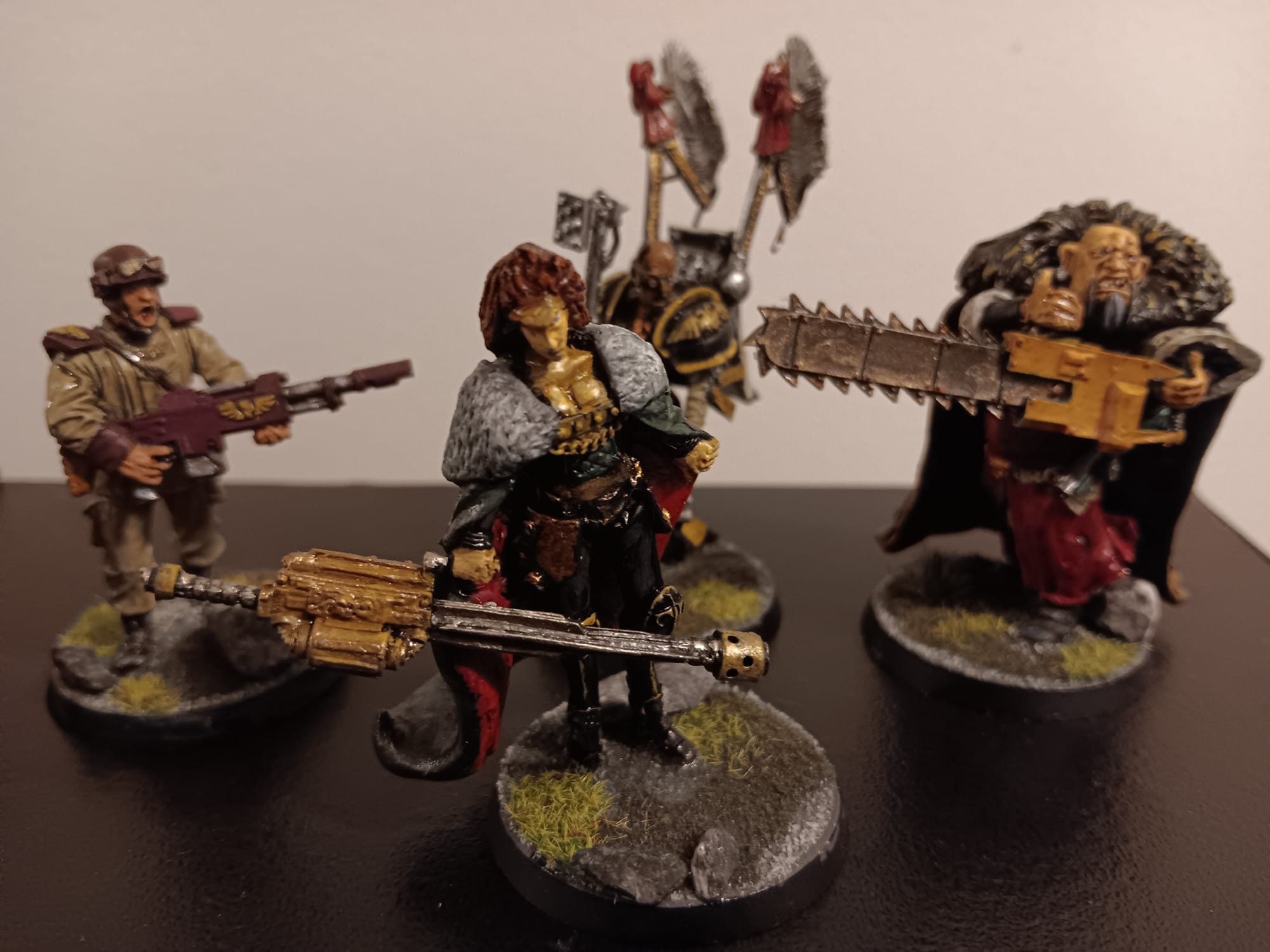
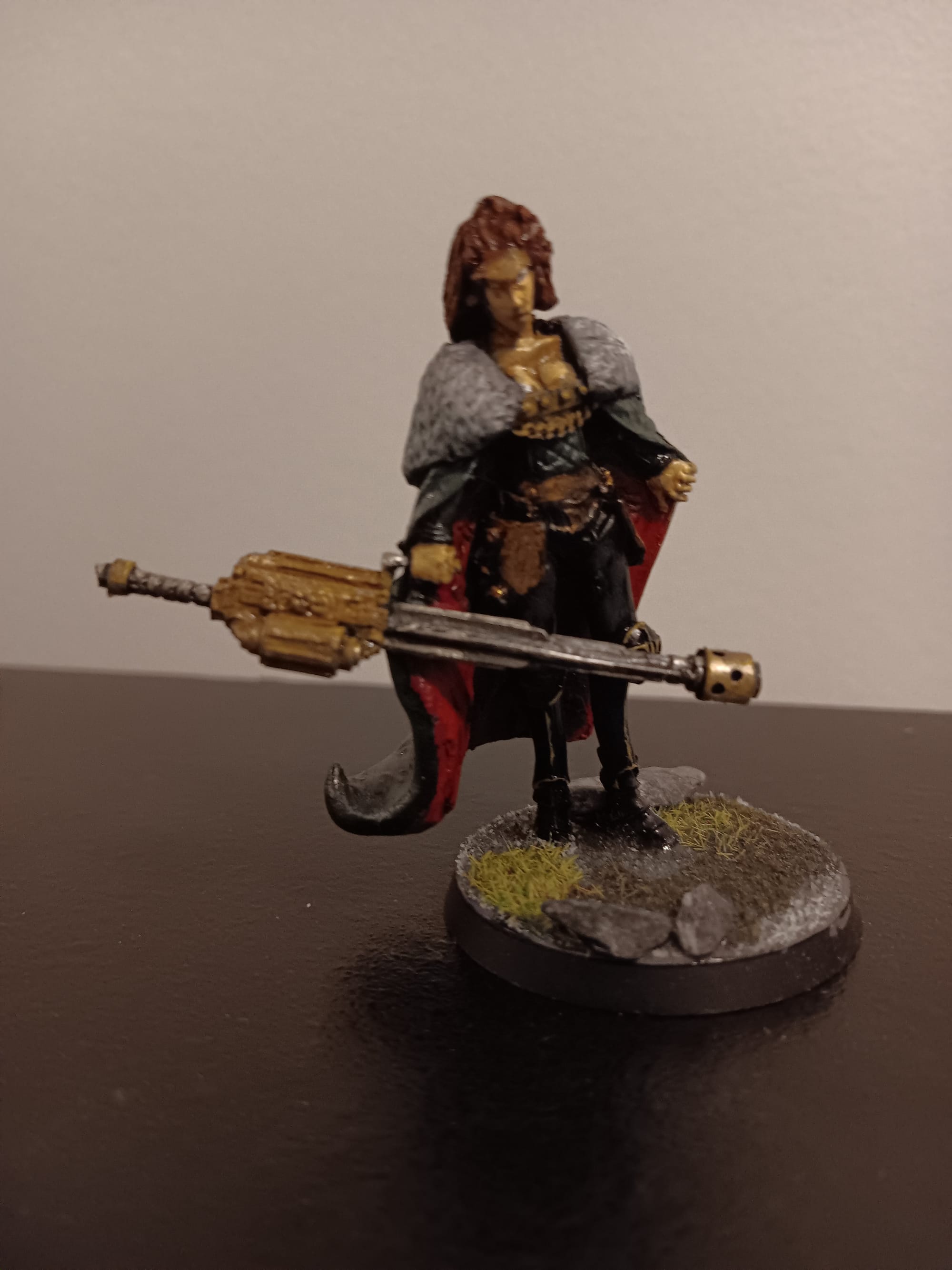
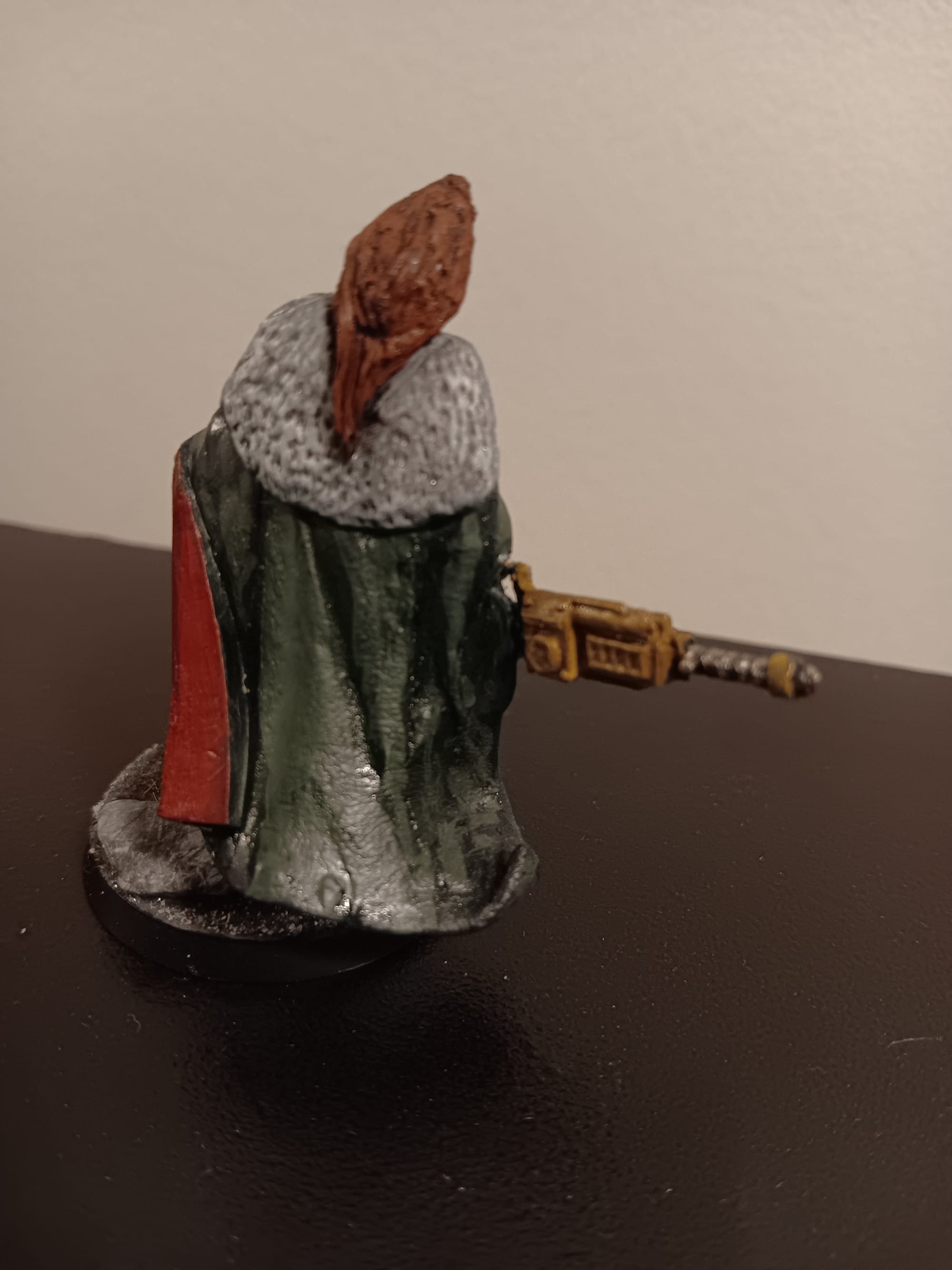
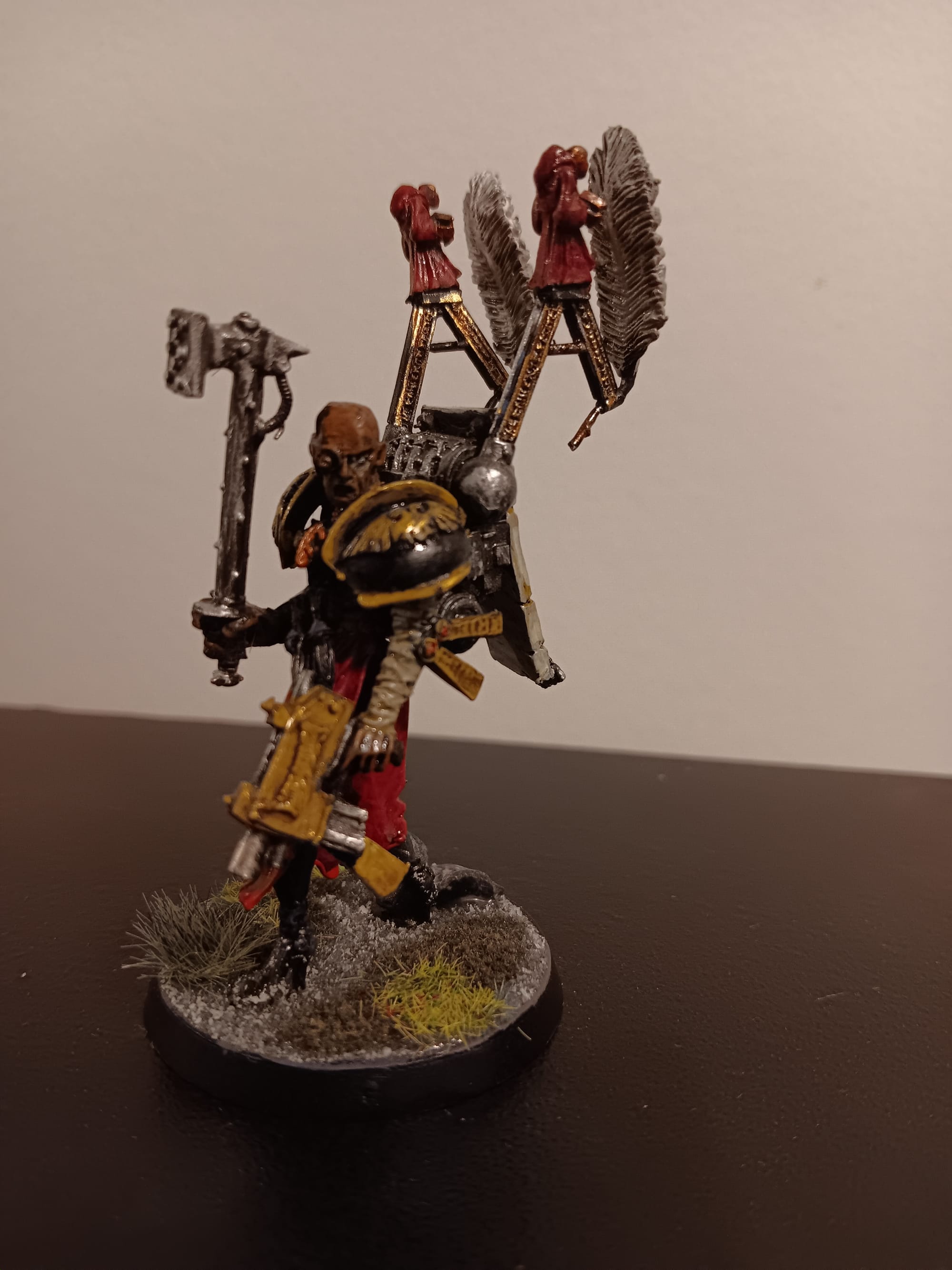

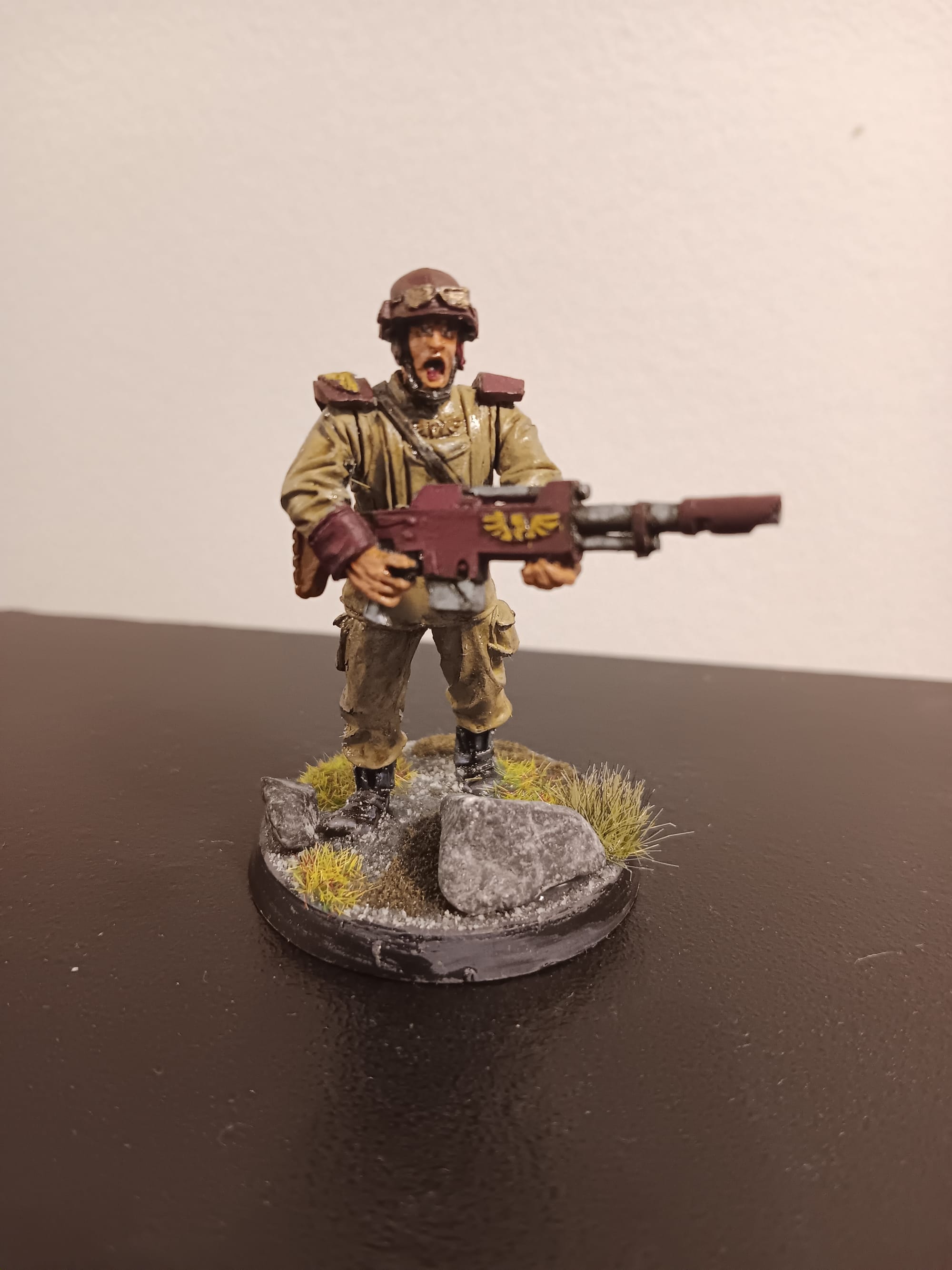
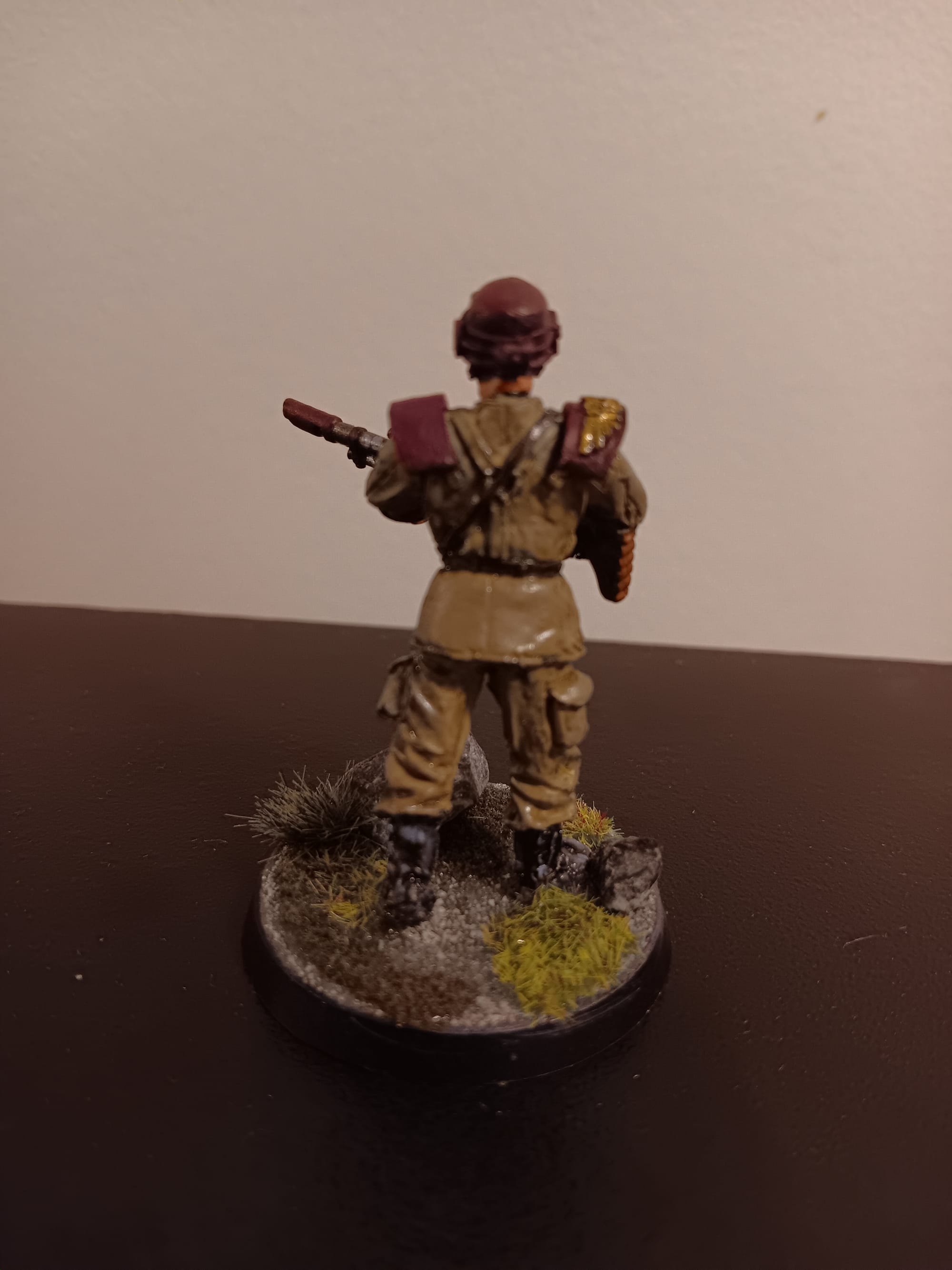
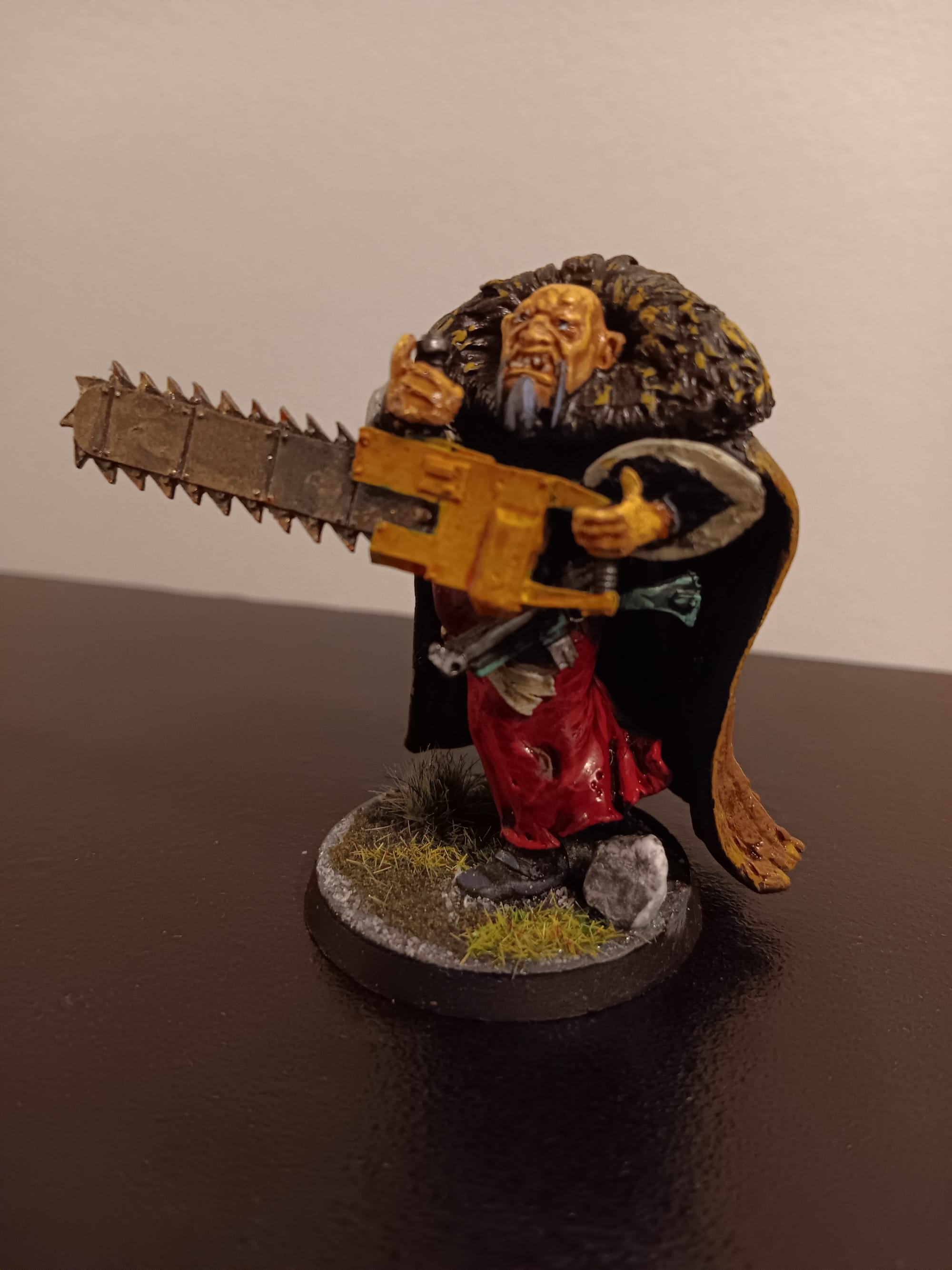
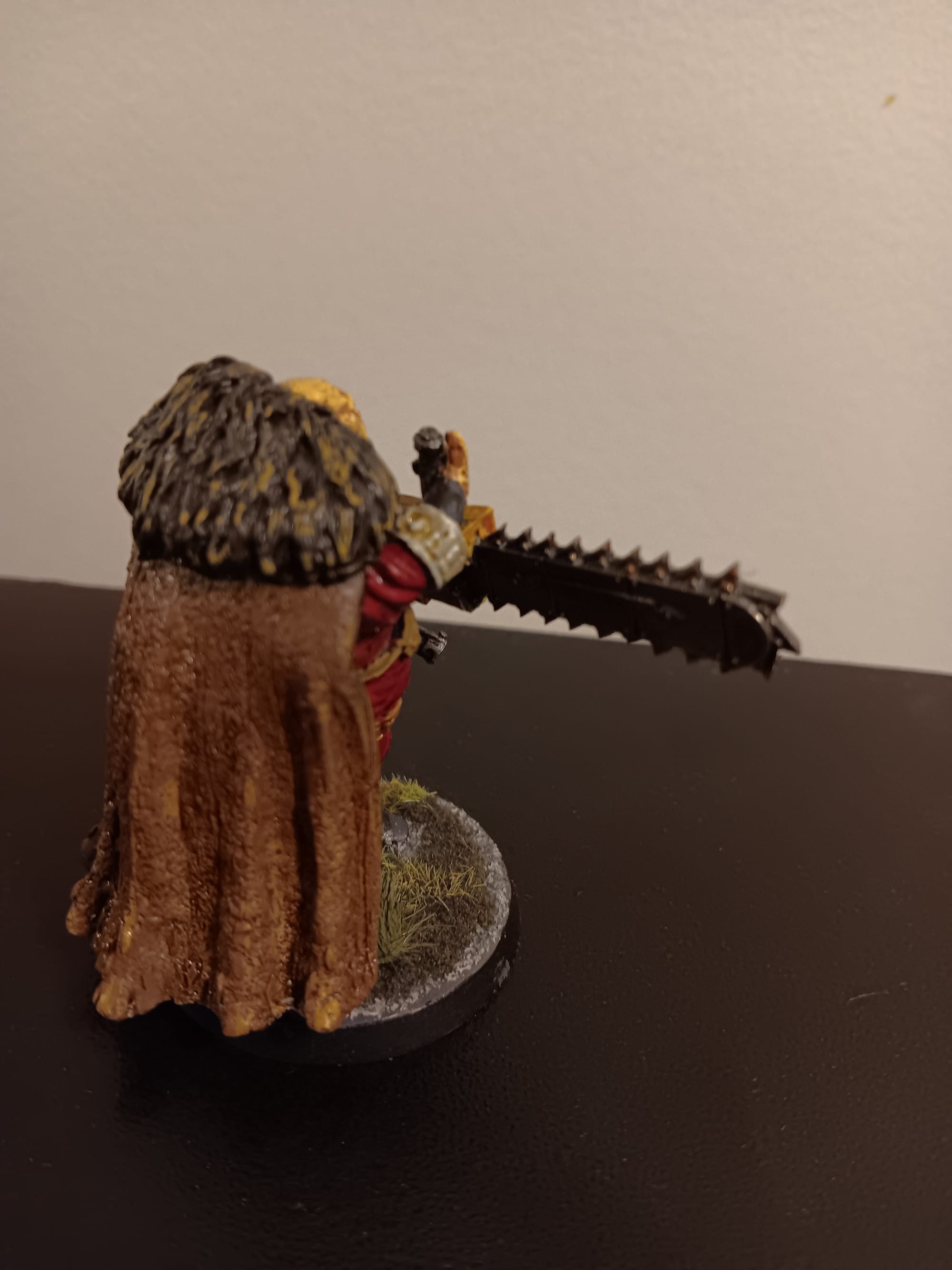
Lydixia herself is a pretty simple conversion mixing the Lady Jena and Demon Huntress kits, with the thermal lance thrown in for fun. I added some green stuff to her hair to switch away from Jena's long braids, and to give her cloak a new look.
Bellabrock, the Sister of Battle, is essentially a "beef-up" of the existing Sister Repentia kit, which I felt lacked presence. I added some hefty shoulder pads in the vein of power armour, and stuck on the Thorian Inquisitor's backpack, inverted, to give the impression of a jump pack. A simple arm and weapon-swap to a warhammer finished her up, along with a paint job semi-inspired by Danai Gurira in Black Panther.
Sergeant Gideon Pikel might actually be my favourite of the group, because he has no conversion work done at all, and has the simplest paint scheme. But the simplicity honestly works, I feel, and he could well be the best-looking mini of the bunch.
Brother Brachus, the last of the bunch, was the trickiest conversion. He mostly uses the Preacher Josef kit, which was a pain to work with, and had arms that were tricky to align to the eviscerator. The addition of the Crime Lord cloak, along with a well-sized Ogre Kingdoms head, made him look more solid. He kind of gives "retirement leatherface" vibes, but I love him nonetheless.
There'll be many more of these warbands to come, peppered in between my myriad of other minis and craft pieces!
Rantables
Crybully CountryTrump's shooting and the victim-aggressor narrative
There's this classic cover of Captain America I often think about.
It's one of the earliest issues of the First Avenger, and therefore dabbles in casual racism and some pretty hokey World War 2 propaganda. It also came out on April Fool's Day, 1941, and was issue 13 — two coincidences which handily set it up for a punchline about how it represents the goofy, incompatible dichotomy of America's identity: that of the world's dominant superpower, and yet somehow, simultaneously, its scrappy underdog.
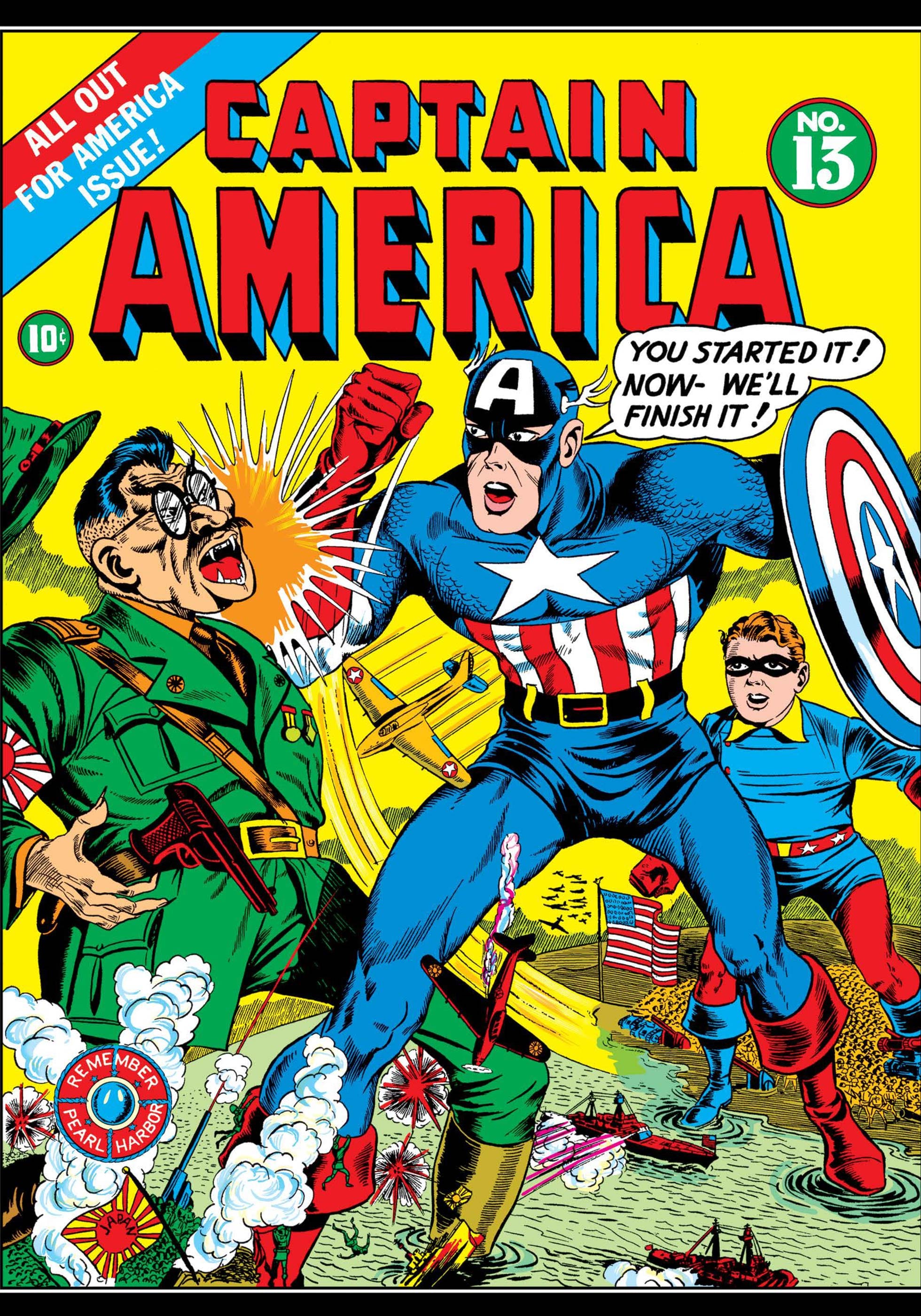
The cover features a giant-sized Cap quite literally striding through the Pacific Ocean from America towards Japan, punching a comically racist depiction of Hideki Tojo, fangs and all, as a bizarrely-proportioned Bucky Barnes looks on.
"You started it!" Captain America declares. "Now — we'll finish it!"
It's an absolutely perfect distillation of the American identity in World War II; that of an aggrieved party who suffered an unjust and unprovoked attack on its own soil, and therefore was justified in using whatever means are necessary to "finish it."
I won't go into the intricacies of whether or not this position is justified, but what's noteworthy is how this type of casus belli (justification for war) represented a sea change in the way war has been conducted since then.
Prior to this, dominant powers of the world, mainly European, simply invaded. That was that. Hitler needed no special permission from the population to do as he wanted. He just did it. But so too, at various points in history, did France, Russia, Britain, Spain, and several other powers. There was, of course, a system of alliances which led to back-and-forth declarations, as in World War I, but there was hardly a necessity to pretend to this kind of "underdog" narrative.
The simplest explanation for this is that in a democratic society, when people are allowed to question the reasons and justifications for war, that can cause them to realize they're being suckered. This was definitely the case with US involvement in Vietnam, and it certainly seems to have been the case in Iraq.

So the prevailing narrative is that the US only engages in "just" conflict, as in Afghanistan, where it suffered a terrorist attack on September 11, 2001. This, despite overwhelming evidence at the time and in years to come that Osama Bin Laden wasn't even in Afghanistan and the links between the two were tenuous at best. Or in Iraq, where the US claimed evidence of non-existent "weapons of mass destruction."
The point is, the United States, global superpower and self-appointed world police, could walk a tightrope across the public imagination of being the victim and somehow, also, the almighty superhero, capable of crushing all enemies before it.
Which brings us to Trump.
The reaction to the assassination attempt on Trump has been, if nothing else, predictable. At once seizing on the moment as an opportunity to shift the political narrative away from Trump's criminal conviction and Project 2025's fascist aims, right-wing politicians and affiliates have put forth the notion that they are, indeed, the victims of an evil plot.
This narrative would crumble under any amount of scrutiny. The shooter has been identified as a 20-year-old white male with a Republican Party membership. But even forgetting that part of the evidence, the notion that Trump, a man of Brobdingnagian privilege, with ties to Jeffrey Epstein and an inherited fortune of millions, is somehow an underdog, is laughable.
But so, too, is the notion of America as an underdog. It's just simply absurd to even consider that one of the world's wealthiest, most powerful, most well-armed, and most domineering countries with colonial possessions it STILL treats as second-class is this scrappy little land of "just folks, you betcha."

Now, America does not hold a monopoly on this phenomenon. Israel, for instance, has capably positioned itself as the long-suffering victim of a massive global conspiracy, while perpetuating a military occupation and forced illegal land seizure over Palestine for decades. This latest attack by Hamas was an absolute gift to the Israeli cause, paving the way for a brutal invasion that shows no signs of slackening public support at home.
Even Russia, when it invaded Ukraine, did so under the flimsy auspices of a "special military operation" aimed at "de-Nazification." That performative nonsense seemed less targeted at the domestic Russian audience than it did at the eager-to-please Western crowd, who gobbled up the propaganda with aplomb.
So why does all this matter? Why is it important to even bother thinking about the nature of these "crybully" tactics? For starters, understanding the nature of a lie helps to counter it. One might, for instance, tacitly point out that Trump's expressed shock at the shooting at his rally is ludicrous given the amount of gun violence the United States has seen, especially in recent years.
One might also point out that in no way does being shot at absolve one of crimes. Famously, child molester Jeffrey Doucet was murdered by the father of one of his victims while in police custody. This did not invalidate Doucet's arrest, nor obliterate the mountain of evidence that had led to that arrest.
The point is that a crybully narrative, where one can play both the part of aggrieved victim as well as justified dominator, is an elaborate emotional manipulation. That it is done on a nationwide or even global scale does not negate its effectiveness nor its malice. If anything, it makes it that much more obscene.
We must collectively reject such manipulations. It is hard. Politicians prey on our instincts of fear, and fear response. They shroud themselves in the collective to avoid facing the personal, as with Trump and the right-wing touting this shooting as "an attack by the left." This is the rhetoric of expert manipulators.
They started it. You have to choose not to finish it.
And Lastly, a Word
Cosmic butterflies in our stomachs - Run Lola Run
"I wouldn't let you die."
- Manni and Lola, Run Lola Run
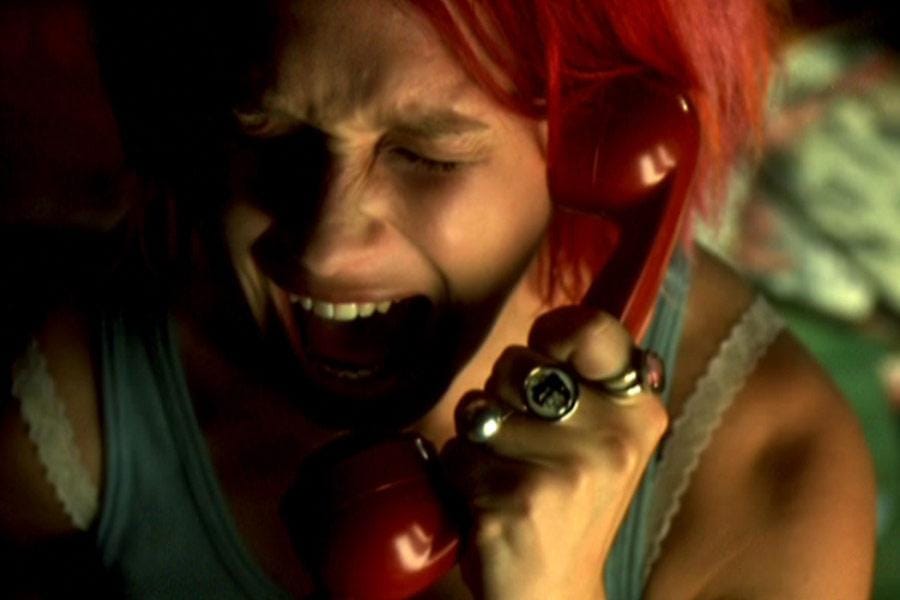
Run Lola Run, the German experimental action movie by Tom Tykwer, received a 25th anniversary (it played in North America in 1999) 4K re-release and played to select theatres starting in June.
If you've never seen it before, the movie is an intensely stylish rollercoaster that quite literally sees its title character, Lola (played by Franka Potente, probably best known to North American audiences as Jason Bourne's love, Marie, in the first two Bourne movies), absolutely BOOKING IT through most of the 80-minute runtime as she tries to scrape together 100,000 German marks in 20 minutes to save her boyfriend, Manni, from being executed by a mob boss.
Spoilers ahead for this 25-year-old movie, which you absolutely should check out if you haven't already.
...did you watch it? Good. Now, let's talk about it.
SPOILERS HEREIN (click to expand)
The main "twist" on that action formula is that Lola fails in the first 25 minutes. She arrives too late for Manni's 100,000-mark payoff, and he opts instead to rob a store, leading to a confrontation with the police where Lola is gunned down accidentally.
But then...time resets. And Lola tries again. And again.
How exactly she accomplishes this, the film never explains. This isn't a time-loop situation like Edge of Tomorrow, although undoubtedly the makers of that film and other non-stop action flicks like Crank or stylish quick-cut creators like Edgar Wright drew inspiration from Run Lola Run.
No, instead, Tykwer's movie is a much more heady, experimental look at one of philosophy's most classic dilemmas: free will vs. determinism.
In a nutshell, these two philosophical positions postulate, respectively, that people either have total agency over their actions, or our actions are predetermined.
But slow down, you might say. Surely free will is obvious on its face, right? I can choose at any moment, for instance, to subscribe to this e-newsletter. That's my choice. Nobody else is making it. (please)
Or are you? Determinism might argue that your upbringing, your environment, or your surroundings are all influencing your decision-making, and therefore, your agency is illusory. We are, in other words, the products of cosmic certainties beyond our comprehension.
On the other hand, how does that track with human influence? I mentioned upbringing above as a "deterministic" factor, but if your parents CHOOSE to raise you a certain way, are you therefore subject to their "free will?" Can you defy that?
These are the questions at play in Run Lola Run. From the very beginning, the movie positions itself as exploring the tension between free will and determinism, but also of what it means to really KNOW one's place, internally. Tykwer hits the audience from the first frame with a quote from T.S. Eliot's "Little Gidding" as a kind of philosophical appetizer:
"We shall not cease from exploration
And the end of all our exploring
Will be to arrive where we started
And know the place for the first time."
In Lola's repeated loops, she makes small alterations to her trajectory that have large, unforeseen consequences, both on herself and the people around her. Slightly bumping a woman with a baby carriage makes her win the lottery. Avoiding her entirely sees her become a born-again Christian. That kind of cosmic butterfly moment — the metaphysical theory that a butterfly flapping its wings can somehow effect massive changes a continent away — is an outsized look at how determinism can be completely unknowable.
Yet Lola's free will seems built out of iron. Following one run that sees Manni fatally struck by a speeding vehicle, we flash back to Manni and Lola in bed, in a quiet, romantic moment. Manni, seeming somehow aware of his death, asks Lola:
"What would you do if I died?"
"I wouldn't let you die," she replies without hesitation.
Pressing her on this, he insists she would forget about him. That's the way of things, he says.
But the more telling piece of this puzzle is how Lola's immediate reaction is one of denial. That Manni will die is a cosmic certainty. Everyone dies. He might not die before her, but he will die,period. Yet her instinct is to defy that cosmic certainty, and in so doing, she become a kind of superhero.
We see on more than one occasion that Lola somehow flexes her will to override the laws of chance and fate. She screams, and glass shatters, and people bow to her will. In a climactic scene at a casino, she screams in defiance of the chance of a roulette wheel, which somehow causes the ball to land on her chosen number twice in a row.
The casino patrons around her stare at her in shock, awestruck by this person exercising what must, to them, seem like a miracle of free will winning against determinism — represented here by cosmic chance. The parting camera shot pans over their faces, all watching her silently...before also gliding past a portrait on a wall, its own face turned away. The building, the edifice, the cosmos...does not follow.
And ultimately, what we learn in this final run is that Manni didn't need Lola's help after all. When she catches up to him with her casino winnings, certain she saved him, it turns out he saved himself already, tracking down the lost bag of cash he owed and handing it off to his mob boss. He greets her with gentle surprise, as if nothing had happened.
This does not, however, deflate Lola's accomplishments. They're now 100,000 marks independently wealthier, and by legal means. What it shows is that fighting what we CAN'T control makes no sense. That doesn't mean we cannot take action, and pursue happiness. But it does mean that knowing one's place in the universe can be the happiest outcome of all.
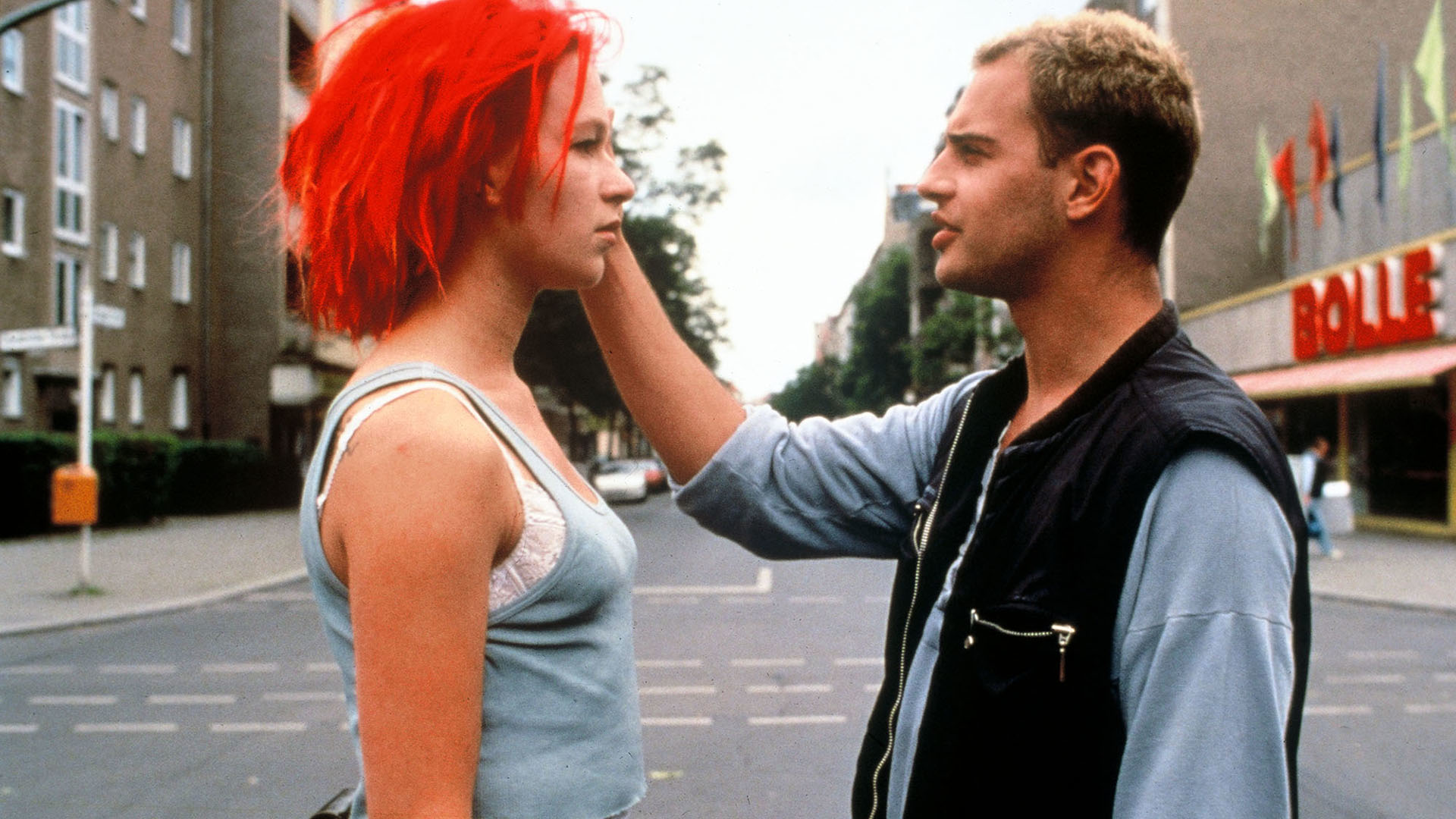
That wraps up the second issue of The Lagrange Point! If you enjoyed this issue, please consider subscribing, or, if you're already subscribed, sharing a link to the e-newsletter with a friend or family member!
I can't grow this e-newsletter alone. I'll need lots of mouths spreading lots of words about why people should read The Lagrange Point.
Until next Monday, thank you for reading!
-Tim



